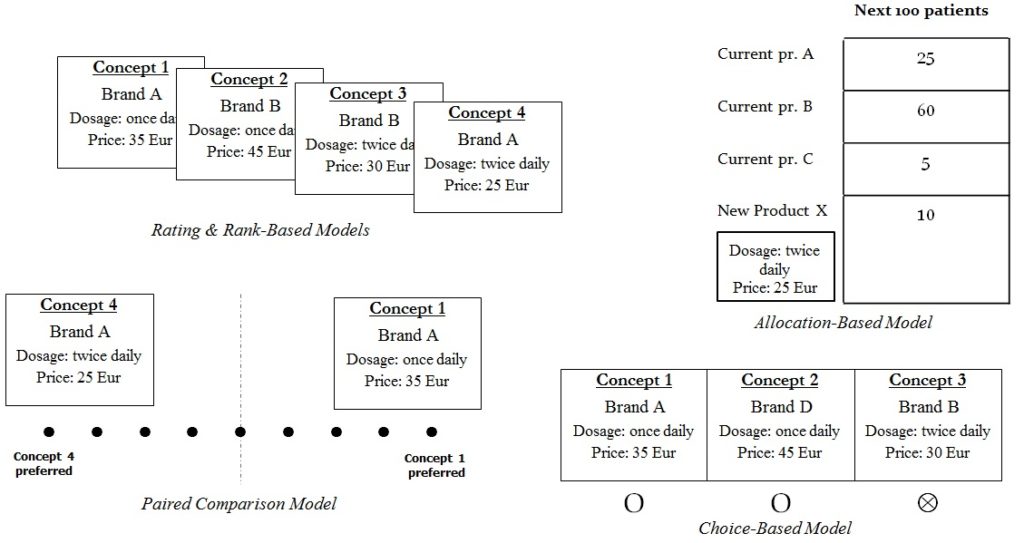In conjoint analysis:
- researchers describe products or services by a number of variables levels and
- then collect and measure respondents’ preference, potential choice, or purchase interest. The adopted approach defines the model.

- product features are not shown in isolation as in conventional questioning but respondents are exposed to partial or complete products;
- respondents assess not only one but several products profiles;
- the type of assessment defines the conjoint model (choice-based model, allocation model, rank conjoint model, etc.);
- analysis of the respondents’ choice patterns brakes down overall evaluations for products into preferences for their individual elements and thus allow researchers estimating how much value a respondent puts on each elements and, consequently, allows modeling the decision making process;
- the choice behavior elements are usually incorporated into a simulator that mimics respondents preferences.

Alternative Conjoint Models
There are many conjoint models available on the market. The following are the most popular.
| Rating & Rank-Based Conjoint | Respondents rate or rank all scenarios based on preference or likelihood to purchase |
| Paired Comparisons of Profiles Conjoint (PCP) | Respondents choose the most preferred scenario between 2 |
| Choice-Based Conjoint (CBC) | Respondents choose the most preferred scenario, usually from a set of 3 or 4 |
| Allocation-Based Conjoint (ABC) | Along with the new product, all key competitors are listed. Respondents allocate a number of points to each option |
| Hybrid Designs (ACA, ACBC, etc), Menu-Based, and Dual Conjoint | Various exercises, typically a combination of other conjoint models. Appropriate when many attributes need to be explored |
R-sw Conjoint is the only commercial software that allows analyzing Rank-Based and Allocation-Based Conjoint data. It also allows analysis of Choice-Based Conjoint data.
